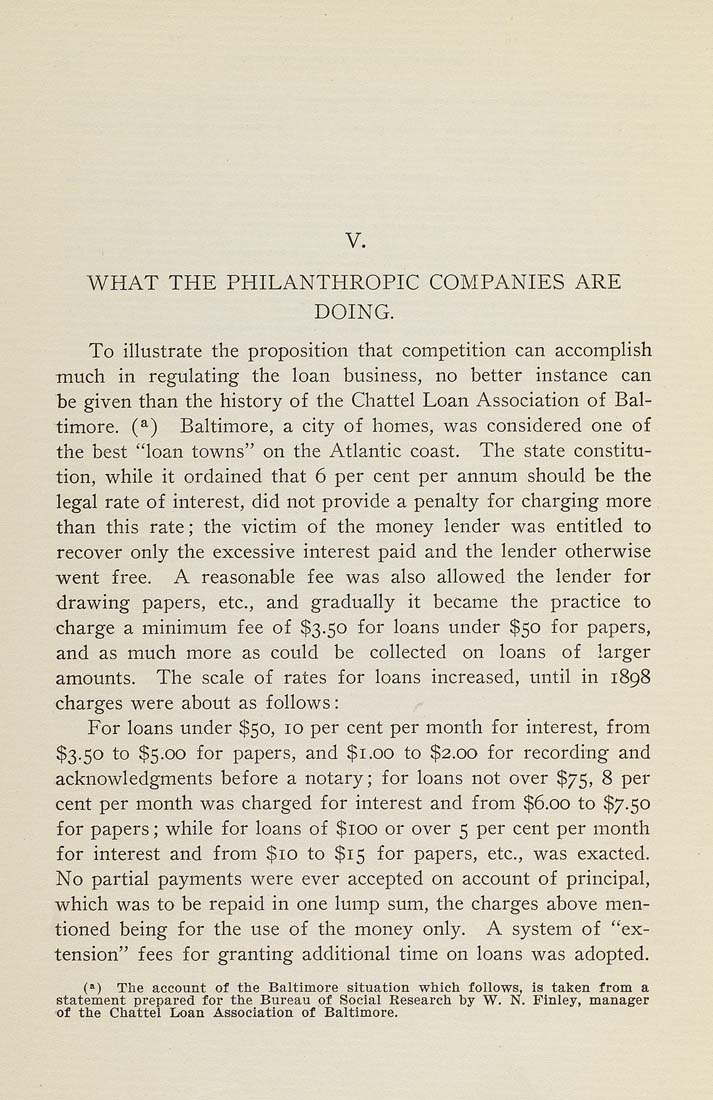V.
WHAT THE PHILANTHROPIC COMPANIES ARE
DOING.
To illustrate the proposition that competition can accomplish
much in regulating the loan business, no better instance can
be given than the history of the Chattel Loan Association of Bal¬
timore. (") Baltimore, a city of homes, was considered one of
the best "loan towns" on the Atlantic coast. The state constitu¬
tion, while it ordained that 6 per cent per annum should be the
legal rate of interest, did not provide a penalty for charging more
than this rate; the victim of the money lender was entitled to
recover only the excessive interest paid and the lender otherwise
went free. A reasonable fee was also allowed the lender for
drawing papers, etc., and gradually it became the practice to
charge a minimum fee of $3.50 for loans under $50 for papers,
and as much more as could be collected on loans of larger
amounts. The scale of rates for loans increased, until in 1898
charges were about as follows:
For loans under $50, 10 per cent per month for interest, from
$3.50 to $5.00 for papers, and $1.00 to $2.00 for recording and
acknowledgments before a notary; for loans not over $75, 8 per
cent per month was charged for interest and from $6.00 to $7.50
for papers; while for loans of $100 or over 5 per cent per month
for interest and from $10 to $15 for papers, etc., was exacted.
No partial payments were ever accepted on account of principal,
which was to be repaid in one lump sum, the charges above men¬
tioned being for the use of the money only. A system of "ex¬
tension" fees for granting additional time on loans was adopted.
{») The account of tlie Baltimore situation which follows, is taken from a
statement prepared for the Bureau of Social Research by W. N. Finley, manager
of the Chattel Loan Association of Baltimore.
|








